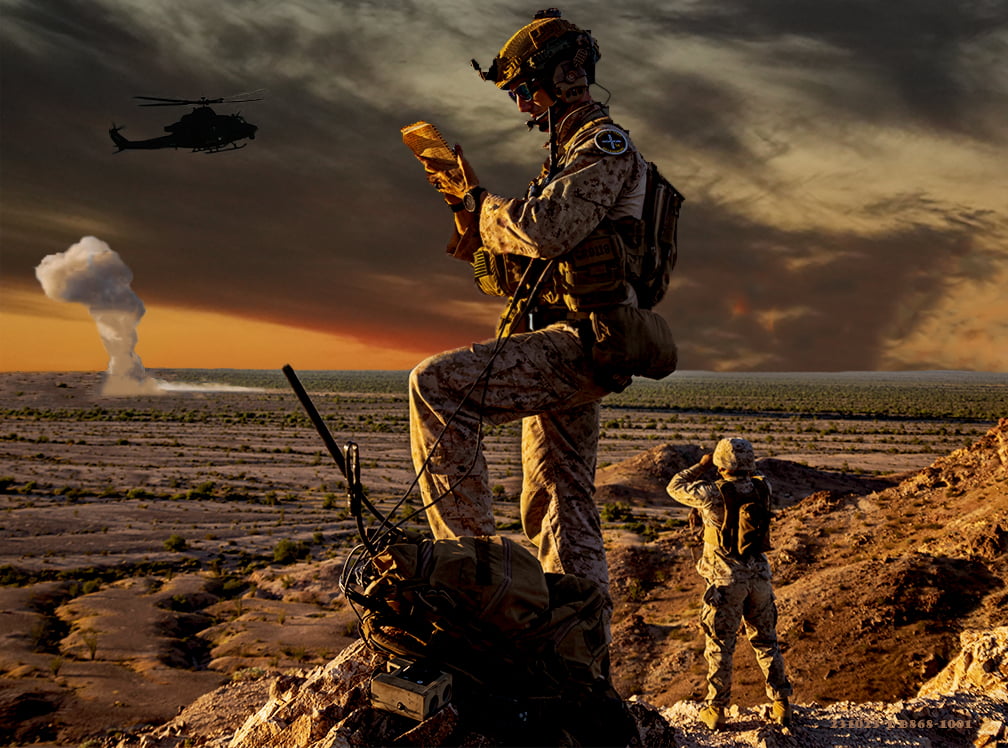By Robbin Laird
The strategic shift from the priority on the land wars to dealing with a world of multi-polar authoritarians and a diversity of contingency operations requires significant operational change in the force.
Because MAWTS-1 is focused on standardized training for the operational force, they have an open aperture to be able to incorporate operational change but not from briefing slides and wargames, with the force that the Marines that is ready to fight tonight.
As the end of course video for WTI-1-24 opens with: “It is not a question of if the Marine Corps will go into combat, it is only a question of when.”
With this perspective the future is now but done with a perspective to be able to add real capabilities wherever the Marines can find them. As one former CO of MAWTS-1 told us: “The Marines are the ultimate scavengers.”
My discussion during the November 2023 visit with Major Green who is a UH-1 Yankee pilot and the Division Head of the Tactical Air Control Party Department. He explained that when he first came to MAWTS, the department was called the Tactical Air Control Department.
But this name did not reflect the reality of the personnel trained by the department. Roughly of the personnel involved are pilots and after training at MAWTS-1, the go back to their squad as pilots. The other half are enlisted Marines who serve as JTACs or Joint Tactical Air Controllers.
As we talked, it was clear that the experience of the land wars whereby JTACS provided Close Air Support, although a key function, was changing as the USMC focused on maritime operations and deep interdiction missions.
How to do this shift successfully is a work in progress, but the role of the ground controllers is changing as historically they have not had access to Link-16 which is a key system for air integration.
The C3 department has access to a variety of means to integrate data, but the challenge now is to push an ability to do similar integration to the ground air controller.
Or put in other words, legacy CAS was the focus of the ground air controller: their role now was to work as an integrative element between the GCE being distributed in the battlespace with the air element which can provide sensing, strike, and communication links for the distributed GCE.
Major Green indicated that there was an increasing focus on new simulation capability for training at MAWTS-1. The legacy systems are too limited to meet the demands for training the force for districted and deep strike operations.
With new prototype simulation capabilities in their hands, Greene saw the future development of LVC as an important tool in shaping a way ahead to train to new concepts of operations as well.
He noted that in his time at MAWTS-1 (nearly three years), there has been enhanced focus of attention on the maritime domain and ways the USMC operates in that domain. He noted that there was “more of a maritime flavor to our training efforts.”
In short, the USMC is working on the “physics” of the execution of actual FARPs/EABOs in the evolving combat environment, to use LtGen (Retired) Rudder’s words.
And this obviously affects the role of the tactical air commander in linking together the air and the ground elements going forward.
Featured graphic: A graphic illustration for Tactical Air Control Party, Marine Aviation Weapons and Tactics Squadron One who assisted in close air support exercises during Weapons and Tactics Instructor (WTI) course 1-24, at Marine Corps Air Station Yuma, Arizona, Oct. 25, 2023. U.S. Marine Corps graphic illustration by Lance Cpl. Emily Hazelbaker.


